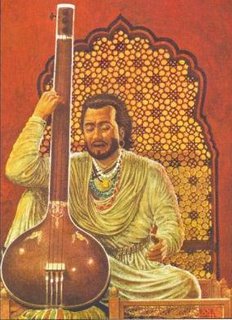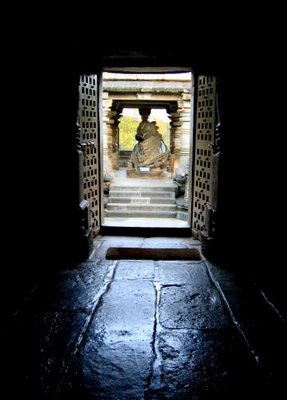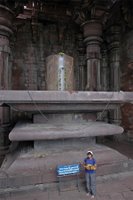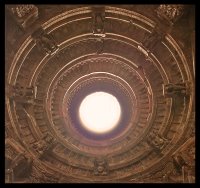
When there is a convergence of two sciences, a truth is revealed.
When there is a merger of two resonating sounds the reverberation is felt.
When there is a culmination of thoughts between two minds a realization engulfs you.
Shore temple Mahabalipuram: Such was the state when i revisited Mahabalipuram yesterday. There was knowledge in the air, realization in the mind and excitement in the heart! I have visited Mahabalipuram too many times, and i have most often been the guide, telling people what to look for.
This time I went with my Guru since he had not visited the place. I thought i was an expert when it came to the Art History of Mahabalipuram. Strangely this time i maintained silence. There was this long moment of truth when two siences met, when i spoke on the basis of temple architecture and iconography and my Guru spoke on the basis of ritual. Ritual covers all the loop holes that art history misses out. This was clearly evident during our visit.
Art history helps to locate artifacts, and sculptures and gives the logical approach, ritual helps to explain them through subtle reality. This time the Shore temple had added a lot more meaning to my quest. It felt more like the jigsaw puzzle of truth was hidden all around it and prominently exhibited itself at the same time to all those who cared to take a deeper look.
Now let me explain. When you visit the Shore temple or any other old temple for the first time, the thrill has just begun. The first stage is of discovery. A visual display to the imagination you held about that place is now guided by the experience.
The subsequent few visits, display the most prominent facts to you, in the case of the Shore temple it would be two temples, assimetrically placed. Life size Nandis around the main wall and yalis along the walls of the temple. The temple has a platform, on which is the bhiti(wall), with niches and capitals with statues within them. A shrine chamber(garbha griha), with a path of circumambulation and maybe a vestible(antarala in larger temples). A strange reclining Vishnu on Ananta is sandwiched between the two Shiva shrines.
If the intrigue has lasted long enough and has made you look into books to look for what all this is about, then slowly more is visible. Built around 6th to 7th century AD, under the Pallavas, it was patronized by Narasimhavarman and Mahendravarman. The temple still follows the canons of architecture very strictly. It reveals a three tired roof and a five tired roof with strange architectural elements. Small heads called Kudu(tamil term, not sanskrit) figures lace the kapota (the base on which the roof stands). At this point all eyes are on the walls, which are profusely sculpted and the Vimana(roof) which is imposing and magneficent. You will realistically spend the next three years wondering about all the sculptures, their names, who they are and what are the stories behind them. You will find forms of Shiva you never heard of.
Lets assume you got the right books and stuck to them. The Pallavas were initially vaishnavite followers and later turned to Shaivism. Hence the sandwiched Vishnu is carved onto the bedrock and existed well before the temple took shape. Soon the attention shifts to the dwarapalas who are resting their body weight on the walls. Lions and elephants hold up the temple on thier backs and ganas are found every where. The linga is a three part stone of which the third part is embedded within the yoni and cannot be seen. What remains here is the depression in the floor. The panel inside the Garbha griha is Somaskanda panel. Mahishasuramardhini is found carved into the heart of a Lion on the side of the temple.
Conclusions: tolerance to different faiths, enough to leave two deities within the temple complex even if that was not precribed in the canons. Acceptance of the mother goddess cult as another equally potent cult by all faiths( that believed in male deities). Lesser gods like gandharvas and nagas suddenly appear on the walls and how did you miss them all along when they were so prominent!!
Then comes the next enlightenment! You just read about the Chalukyas who were contemporary to the Pallavas and therefore there is a sharing of ideas. The plinth is in chalukyan style and so is the science of carving dwarapalas though the style is pallava. How do we know that? One name strikes out of chalukyan guilds that coexisted with pallavas. Baladeva was a well known sculptor who specialized in carving dwarapalas and autographed his sculptures in pattadakkal. The same style is visible here.
Conclusion: an exchange of ideas and technique between the art worlds though there was war between Pulakesi(Chalukyas) and Mahendravarman(Pallava).
If this was not enough, well you have just about scratched the surface. You start looking at the ground plan, and the evolution of the temple. Judging by all the elements of architecture and going back into ancient architecture, the truth hits you that this was originally Buddhist architecture. The same elements take a functional position in Buddhist monastried in Ajanta and Bedsa. Meanwhile you might learn about the true nature of the Shiva Linga as being a part of Phallic worship and that you are actually worshipping the miracle of Procreation, no not the grose act but the subtle reality that governes it. Now the SomaSkanda panel suddenly makes more sense.
So now there is more to it, Phallic worship was a tradition as old as the Indus valley and there rose several subsects of Shaivism like Ligayats, tantriks and Pashupatas among others who had subtle differences in their rituals. The mother goddess cannot be eliminated and her form can be seen as Parvati, durga and Kali. It is also interesting that Somaskanda is another name for Muruga. And yes, Muruga was originally a dravidian war God before he got christened into the Shiva pantheon while Ganesha is a demi God who has now been elevated to God status with popular belief. None of them were born from the union of Shiva and Parvati.
There are many parallel thoughts running in your mind by now. One would be the connection of the Shiva Parvati icons with the philosophy of Kundalini yoga depicted through the Somaskanda panel. The meaning of life as we see it through the Mahishasuramardhini panel. The undying presence of Shiva and Parvati whose origins cannot be dated. And finally the presence of copulation scenes on some temple walls. Why is sex depicted too blatantly when our mindsets are against nudity.
It takes a long while for this one, the hidden presence of yantras all over the place which has ever so remained a secret. That the scenes on the Khajuraho temples were to hide this truth so that we, the uninitiated never get to see what is behind them(works brilliantly). The presence of a mandala that is at the ground plan of the temple. The presence of forms of Lord Shiva selectively places in various niches.
Every thing had a reason... and then my Guru spoke.
















